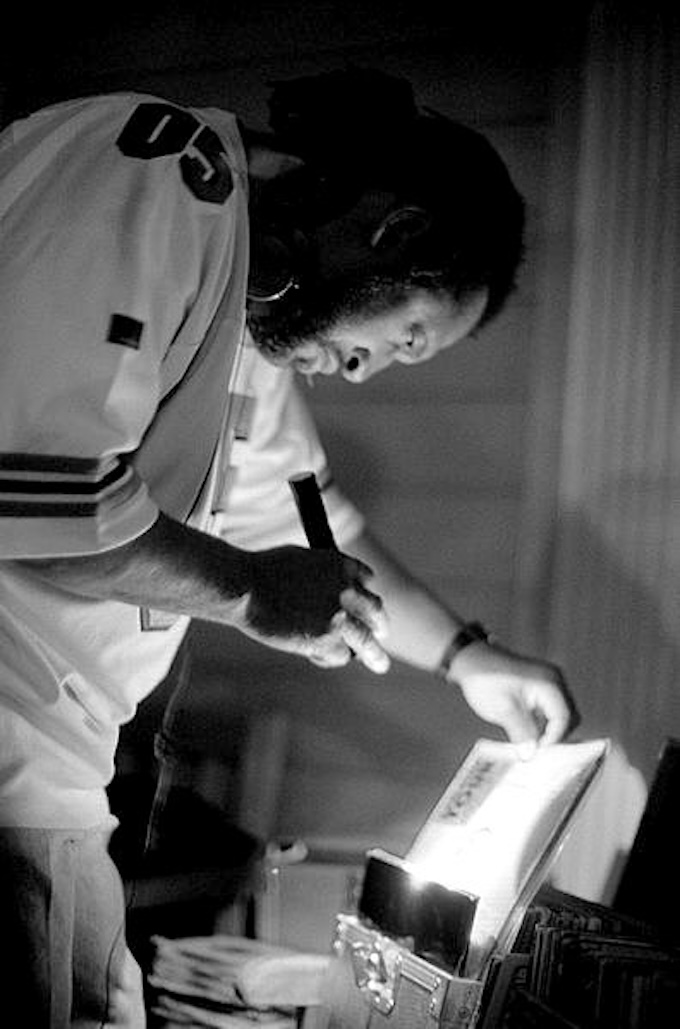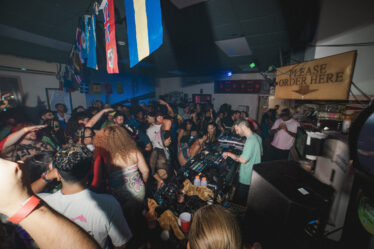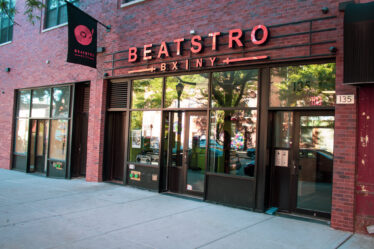
Image courtesy of TeachRock. Pictured is DJ Kool Herc (Clive Campbell).
By: Sarah Davidsen
August 11, 1973. 1520 Sedgwick Avenue. A back-to-school party that would soon ignite a cultural revolution and reshape history. At the time, New York City was facing a profound economic collapse. The post-industrial shift, which marked a transition away from manufacturing jobs that had once supported urban communities, led to a major migration of the white middle class to the suburbs, leaving urban areas to grapple with poverty, declining job opportunities, and increasingly segregated communities. The Bronx felt the brunt of this turmoil, where abandoned buildings and the loss of local businesses added to the sense of despair. But out of this adversity, the urban youth began to carve out spaces for creativity and self-expression – spaces that would eventually give birth to a new cultural force: hip hop.
In the midst of these dire conditions, block parties emerged as vital outlets for community and creativity. These parties were not just places for dancing but also acts of cultural resistance and unity. Graffiti covering subway trains and breakdancing in the streets made it clear that the youth of the Bronx weren’t just surviving, but they were creating, innovating, and finding their voices through their art. It was in this environment that hip hop would find its roots, using sound to challenge the status quo and bridge the economic, racial, and cultural divides in a fractured society. On August 11, 1973, a young Jamaican immigrant named Clive Campbell, who would soon be known as DJ Kool Herc, hosted a “Back to School Jam” with his sister in the recreation room of their apartment building as a way to raise money for new back-to-school clothes. Little did Herc know, his innovative style of DJing would transform the party into a much bigger movement.
Herc, who had moved to New York from Jamaica at the age of 13, brought his knowledge of Jamaican dancehall and combined it with his unique approach to DJing. His breakbeat technique was revolutionary. He used two identical records to create an extended loop by cueing one up as the other’s breakbeat ended to keep the rhythm flowing without interruption and keep the energy of the crowd high. He called this technique “the Merry-Go-Round,” and it quickly became the backbone of hip hop’s DJ style. This innovation not only changed how music was played but also changed the way it was consumed. What Herc had done was extend the most danceable parts of a song, the “breaks,” creating a continuous flow of music that allowed dancers to perform uninterrupted, which set the tone for the entire hip hop sound.
The “Back to School Jam” quickly became a local sensation and Herc’s reputation spread across the Bronx. As demand for his parties grew, he moved from hosting events in small rec rooms to taking his parties to the streets, turning the blocks of the Bronx into open-air dance floors. His ability to read and control the energy of the crowd as he crafted his music to match the mood of the people made his parties legendary. By the mid-1970s, Herc was so influential that other party throwers would adjust their date in accordance with when Herc was having one, understanding that Herc’s jam was the place everyone would be. His parties were more than just gatherings to hear music; they were spaces for the youth of the Bronx to define their own identities and express themselves beyond the traditional confines of society. Hip hop offered a platform for marginalized and silenced communities, becoming a culture that not only survived, but thrived in the face of adversity.
Herc’s DJ style quickly spread and was adopted by other pioneers of hip hop, such as Afrika Bambaataa and Grandmaster Flash. Bambaataa extended the reach of hip hop by organizing larger events and connecting different communities across the Bronx. Flash pushed the boundaries of DJing further by introducing new techniques and becoming a pioneer of turntablism. Each of these figures added their own innovations that shaped hip hop’s sound into the complex and multifaceted genre we know today.
Ultimately, what began as a modest back-to-school bash sparked a cultural revolution. Herc had created a whole new form of expression that helped people to dance during a time of extreme turmoil. His influence laid the foundation for the broader cultural movement that would come to define and popularize hip hop, ultimately reshaping the music industry as we know it.
Sources: DjHistory, ICON Collective, TeachRock



